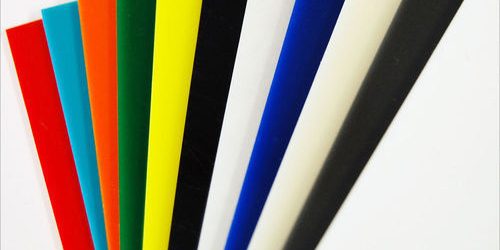For a number of valid reasons, decorative acrylic sheet in Dubai is increasingly being used in construction projects nowadays instead of decorative glass. To ensure that you understand how the two materials vary and when to utilize them, it is crucial to be aware of their respective features. These distinctions between acrylic and glass, as well as which material is ideal for application, are provided.
Differences between Acrylic And Glass
Following are some key distinctions between these two materials:
Impact resistance
Glass is weaker than acrylic plastic sheet, which is ten to twenty times more resistant to strokes. Therefore, when compared to glass, which is readily cracked and broken, acrylic is the undisputed victor in terms of durability. In contrast to glasses, which normally shatter into tiny fragments, acrylic also shatters into huge shards with harsh edges.
Scratch resistance
Acrylic is less scratch-resistant than glass. If you accidentally clean acrylic with paper towels, it might be irreparably damaged. To add an additional layer of defense, acrylic sheets can be coated with a scratch-resistant material.
UVB resistance
When acrylic is left in the sunlight for extended periods of time, it eventually becomes yellow. However, you may make your acrylic UVB-protected by applying a coating or film on it. However, because glass is UV resistant by nature, it is a great material for protecting framed art and furnishings.
Ease of cleaning
Acrylic can crack when cleaned with anything other than soap and warm water, necessitating a replacement. On the other hand, glass is simpler to clean with different materials and cleaners.
Germ accommodation
Acrylic is permeable, but glass is antibacterial. As a result, because glass is simple to sanitize, many healthcare professionals favor it.
Visible Distortion
You truly want your creations to stand out in the world of decorative glass. You don’t want your glass to obstruct you or place restrictions on you, whether it is etched, laminated, back-painted, or printed. Your project may be impacted by the optical distortions of acrylic. This problem may be avoided by using thicker acrylic pieces and acrylic of museum quality. But there is a price for such choices.
Shapes and Patterns
Almost any form may be created by bending and molding glass and acrylic. Embedded patterns are the same. The price difference between acrylic and bent glass is significant.
Durability
Finally, when it comes to durability, acrylic wins. Glass is brittle and can break or split at any time. Acrylic can withstand almost any abuse, save for paper towels and window cleaners.
Weight
Acrylic succeeds thanks to weight. Therefore, if given the choice between shipping a lot of glass or a lot of acrylics, I would choose an acrylic. However, when it comes to cladding and installation, glass weight isn’t really a problem because of glass hardware and adhesives.
The fact that acrylic is both lighter and significantly stronger than glass is one of its most significant advantages. This material is favored for DIY projects since it is simple to work with and won’t break. As much light as genuine glass may travel through, clear acrylic is equally incredibly transparent. Additionally incredibly durable, the acrylic sheet will not deteriorate with time or change color, maintaining its aesthetic appeal. Finally, it’s beneficial to know that acrylic sheet is far less expensive than regular glass.







